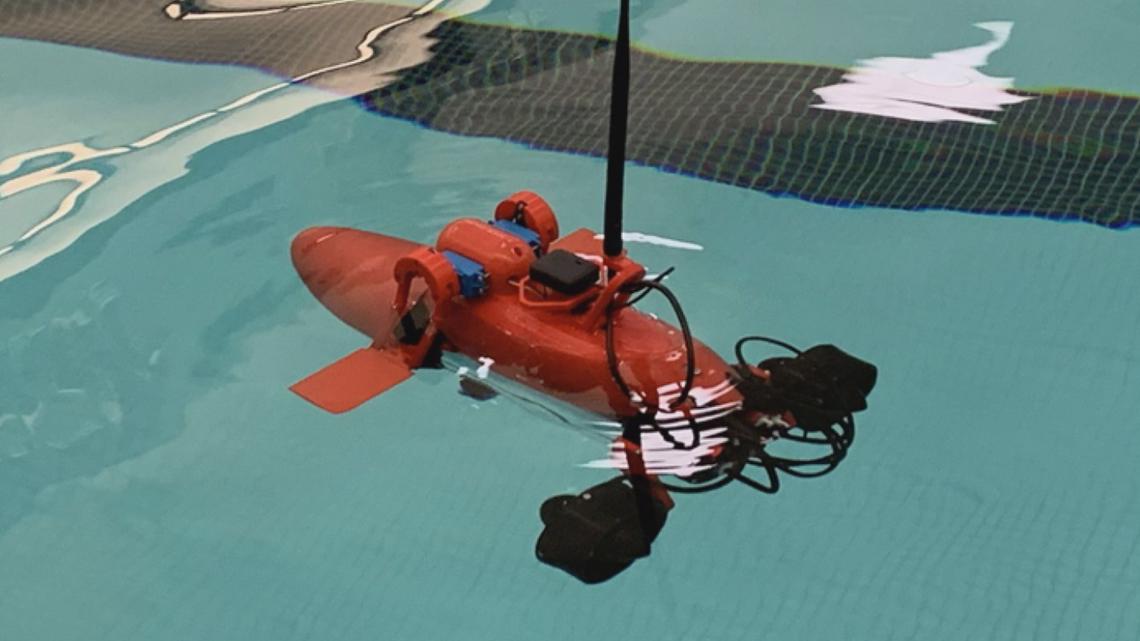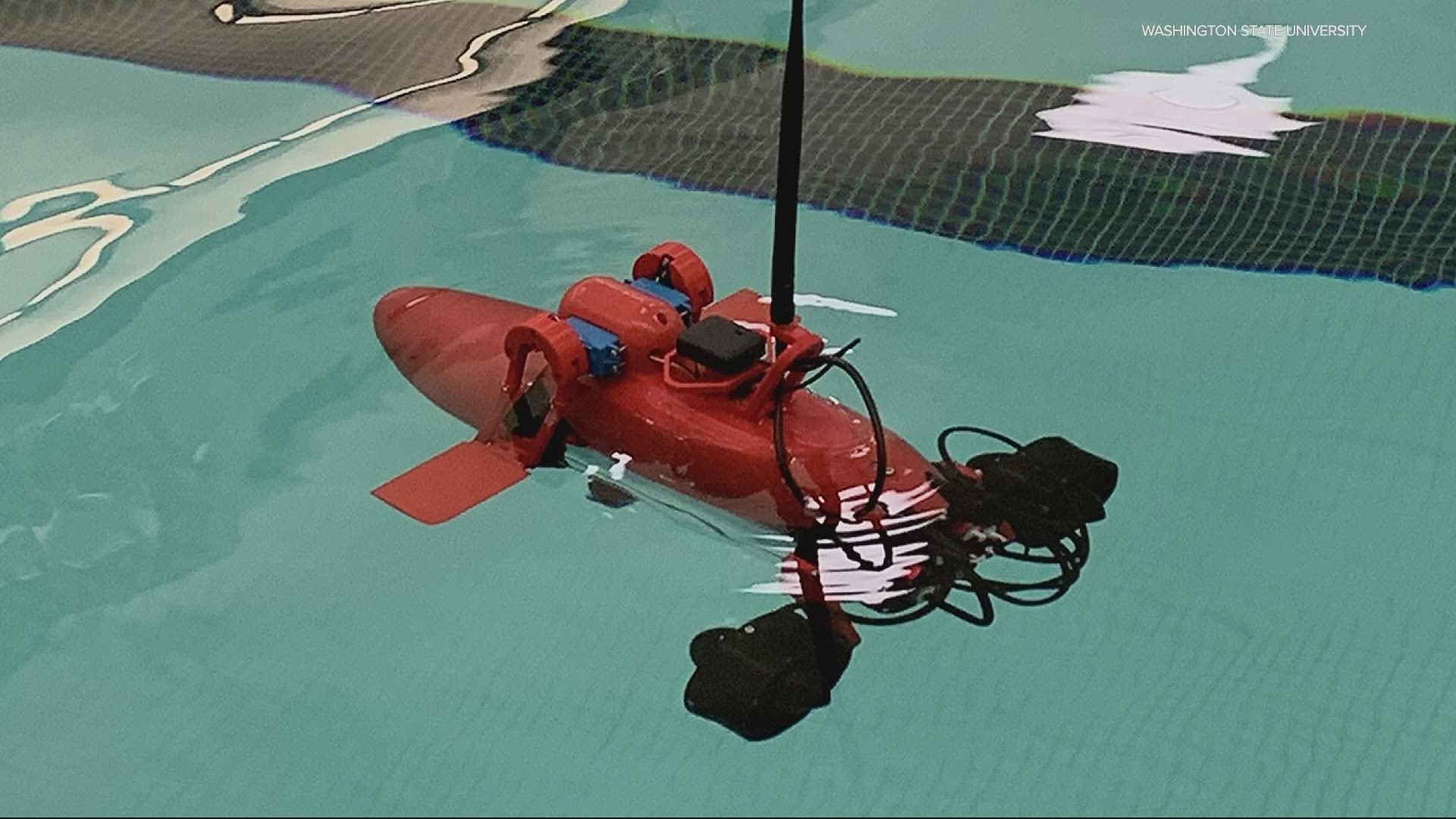PULLMAN, Wash. — A Washington State University professor is trying to make a semi-submersible vehicle (SSV) the wave of the future for military, commercial, and research use.
It is a prototype semi-submersible vehicle, about a foot and half long, built at WSU by engineering students, led by professor Konstantin Matveev. The working model combines features of surface vessels and submarines.
“So it has most of the hull under the water and a small surface above so it's very difficult to detect and at the same time it displaces less water than surface ship,” said Matveev.
The concept is not new, in fact some smugglers have used crude semi-subs illicitly to transport contraband. But Matveev and crew are refining the vessel for a couple of purposes.
“One is for military operation since it is very difficult to detect, so you could transport fuel, troops, maybe use it in special operations,” said the engineering professor, who has developed other unique watercraft in the past.


The WSU team built the small semi-sub out of off the shelf and 3-D printed parts and have tested it in a few locations, by remote control and pre-programmed autonomous direction. The hope is that full sized versions can help the military, and also become a better way to move goods across oceans with more efficiency and less disturbance than cargo ships.
“It's quite a radical change I think for both perception and infrastructure, like reduced environmental impact, being destroy coastlines; and you're also using less fuel. So, it's more environmentally friendly,” said Matveev.
He said the development of the SSV is certainly not complete, and they are looking for government and private funding to take this prototype to the next level.
“But this can be a real breakthrough because it can radically change how we see ships”
The prototype SSV was equipped with sonar and was able to map the bottom of a lakebed, showing its potential as a research vessel as well.

